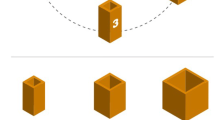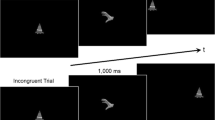Abstract
The development of reaching for stationary objects was studied longitudinally in 12 human infants: 5 from the time of reach onset to 5 months of age, 5 from 6 to 20 months of age, and 2 from reach onset to 20 months of age. We used linear mixed-effects statistical modeling and found a gradual slowing of reach speed and a more rapid decrease of movement jerk with increasing age. The elbow was essentially locked during early reaching, but was prominently used by 6 months. Differences between infants were distributed normally and no evidence of different types of reachers was found. The current work combined with other longitudinal studies of infant reaching shows that the increase in skill over the first 2 years of life is seen, not by an increase in reaching speed, but by an increase in reach smoothness. By the end of the second year, the overall speed profile of reaching is approaching the typical adult profile where an early acceleration of the hand brings the hand to the region of the target with a smooth transition to a lower-speed phase where grasp is accomplished.




Similar content being viewed by others
References
Bernstein N (1967) The co-ordination and regulation of movements. Pergamon Press, Oxford
Berthier NE (1996) Learning to reach: a mathematical model. Dev Psychol 32:811–823
Berthier NE, McCarty M (1996). Speed of infant reaching during the first year: Confirmation of a prediction. Infant Behav Dev 19:531
Berthier NE, Clifton R, Gullipalli V, McCall D, Robin D (1996) Visual information and object size in the control of reaching. J Mot Behav. 28:187–197
Berthier NE, Clifton RK, McCall D, Robin D (1999) Proximodistal structure of early reaching in human infants. Exp Brain Res 127:259–269
Berthier NE, Rosenstein MT, Barto AG (2005) Approximate optimal control as a model for motor learning. Psychol Rev 112:329–346
Busby H, Trujillo D (1985) Numerical experiments with a new differentiation filter. J Biomech Eng 107:293–299
Churchill A, Hopkins B, Ronnqvist L, Vogt S (2000) Vision of the hand and environmental context in human prehension. Exp Brain Res 134:81–89
Engelbrecht S (2001) Minimum principles in motor control. J Math Psychol 45:497–542
Fetters L, Todd J (1987) Quantitative assessment of infant reaching movements. J Mot Behav 19:147–166
Flash T, Hogan N (1985) The coordination of arm movements: an experimentally confirmed mathematical model. J Neurosci 5:1688–1703
Flash T, Hogan N (1995) Optimization principles in motor control. In: Arbib MA (ed) The handbook of brain theory and neural networks. The MIT Press, Cambridge, pp 682–685
Goldstein H (2003) Multilevel statistical models, 3rd edn. Hodder Arnold, London
Halverson H (1933) The acquisition of skill in infancy. J Genet Psychol 43:3–48
von Hofsten C (1979) Development of visually directed reaching: the approach phase. J Hum Mov Stud 5:160–178
von Hofsten C (1991) Structuring of early reaching movements: a longitudinal study. J Mot Behav 23:280–292
von Hofsten C (1993) Prospective control: a basic aspect of action development. Hum Dev 36:1046–1057
Jansen-Osmann P, Richter S, Konczak J, Kalveram K-T (2002) Force adaptation transfers to untrained workspace regions in children. Evidence for developing inverse dynamic models. Exp Brain Res 143:212–220
Jeannerod M (1997) The cognitive neuroscience of action. Blackwell, Oxford
Konczak J, Dichgans J (1997) The development toward stereotypic arm kinematics during reaching in the first 3 years of life. Exp Brain Res 117:346–354
Konczak J, Borutta M, Topka H, Dichgans J (1995) The development of goal-directed reaching in infants: hand trajectory formation and joint torque control. Exp Brain Res 106:156–168
Konczak J, Borutta M, Dichgans J (1997) The development of goal-directed reaching in infants. Exp Brain Res 113:465–474
Mathew A, Cook M (1990) The control of reaching movements by young infants. Child Dev 61:1238–1257
Milner T, Ijaz M (1990) The effect of accuracy constraints on three-dimensional movement kinematics. Neuroscience 35:365–374
Newell K, van Emmerik R (1989) The acquisition of coordination: preliminary analysis of learning to write. Hum Mov Sci 8:17–32
Newman C, Atkinson J, Braddick O (2001) The development of reaching and looking preferences in infants to objects of different sizes. Dev Psychol 37:1–12
Pinheiro JC, Bates DM (2000) Mixed-effects models in S and S-Plus. Springer, Berlin Heidelberg New York
Spencer J, Thelen E (2000) Spatially specific changes in infants’ muscle coactivity as they learn to reach. Infancy 1:275–302
Thelen E, Corbetta D, Kamm K, Spencer JP, Schneider K, Zernicke R (1993) The transition to reaching: mapping intention to intrinsic dynamics. Child Dev 64:1058–1098
Thelen E, Corbetta D, Spencer JP (1996) Development of reaching during the first year: role of movement speed. J Exp Psychol Hum Percept Perform 22:1059–1076
Uno Y, Kawato M, Suzuki R (1989) Formation and control of optimal trajectory in human multijoint arm movement. Biol Cybern 61:89–101
Vereijken B, van Emmerik R, Whiting H, Newell K (1992) Free(z)ing degrees of freedom in skill acquisition. J Mot Behav 24:133–142
Acknowledgments
This project was supported by a grant NSF BCS-0214260 to NEB and HD 27714 to RK. Correspondence should be addressed to Neil Berthier, berthier@psych.umass.edu.
Author information
Authors and Affiliations
Corresponding author
Rights and permissions
About this article
Cite this article
Berthier, N.E., Keen, R. Development of reaching in infancy. Exp Brain Res 169, 507–518 (2006). https://doi.org/10.1007/s00221-005-0169-9
Received:
Accepted:
Published:
Issue Date:
DOI: https://doi.org/10.1007/s00221-005-0169-9




